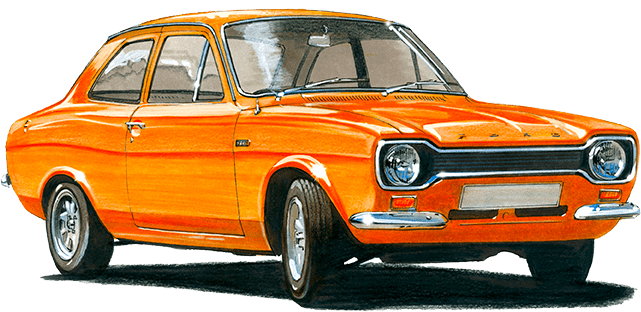
The Ford Escort is one of the most iconic models in automotive history, renowned for its affordability, reliability, and practicality. This compact car has enjoyed a vast production run spanning several decades, with various generations designed to meet evolving market demands and preferences. Let’s delve into the history of the Ford Escort and explore the number of generations produced.
First Generation (1968-1974):
The first-generation Ford Escort was introduced in Europe in 1968, aiming to replace the outgoing Ford Anglia. This model featured a unibody construction, a front-engine, rear-wheel-drive layout, and came in various body styles, including a four-door sedan and two-door coupe. Initially equipped with 1.1-liter and 1.3-liter engines, the powertrain options expanded over time. The Escort MKI was a huge success for Ford, appealing to both families and performance enthusiasts.
Second Generation (1974-1980):
The second-generation Escort, commonly known as the Escort MKII, made its debut in 1974. This iteration sought to improve upon its predecessor’s foundations, introducing modern design elements and enhanced safety features. The MKII featured a more refined and angular exterior, with improved aerodynamics. Mechanically, it introduced several engine options, including the iconic 1.6-liter “Kent” engine. This generation remained popular throughout its production run and is still widely praised by classic car enthusiasts.
Third Generation (1980-1986):
The third-generation Ford Escort arrived in the early 1980s, debuting a more modern design language and greater overall refinement. In this iteration, Ford focused on fuel efficiency and introduced more fuel-efficient engine options, including the 1.3-liter and 1.6-liter gasoline engines and a 1.6-liter diesel engine. Additionally, a sportier performance-oriented version called the Escort XR3 was introduced, capturing the attention of performance enthusiasts. The third generation was a critical stepping stone toward making the Escort a global success.
Fourth Generation (1986-1992):
The fourth generation, also known as the Escort MKIV, was unveiled in 1986, showcasing significant advancements in safety and driving dynamics. This iteration featured more rounded and aerodynamic styling, along with a sturdier monocoque chassis. The interior saw significant updates with improved ergonomics and better-quality materials. The MKIV introduced fuel-injected engines and catalytic converters to meet stricter emissions regulations. It was a popular choice worldwide, and its success paved the way for subsequent generations.
Fifth Generation (1990-1997):
The fifth-generation Ford Escort, often called the MKV, was introduced in 1990. It benefited from a comprehensive redesign, adopting a sleeker and more streamlined look. Ford implemented several advanced features, including anti-lock brakes, airbags, and power-assisted steering. This generation offered a wide array of engines, ranging from 1.3 liters to 2.0 liters. Additionally, performance variants like the XR3i and RS2000 catered to automobile enthusiasts seeking a thrilling driving experience.
Sixth Generation (1995-2002):
The sixth generation of the Ford Escort, referred to as the MKVI, debuted in 1995 with a focus on improved safety and enhanced technology. This generation featured a more contemporary and curvaceous design, emphasizing aerodynamics. Ford introduced the Zetec engine range, known for their fuel efficiency and performance in various models across the lineup. The MKVI also offered a luxury variant called the Escort Ghia, catering to customers seeking a higher level of refinement.
Seventh Generation (1998-2004):
In 1998, Ford launched the seventh generation of the Escort, commonly known as the MKVII or the “New Edge” Escort. This generation boasted a more modern and angular design language, aligning with Ford’s new design philosophy. The exterior styling featured sharp lines and bold features, giving the car a youthful and dynamic appearance. Additionally, it introduced new engine options, including a 1.6-liter Zetec-SE and a 1.8-liter diesel engine. The Escort MKVII marked the end of the model’s production in many markets.
It’s important to note that depending on the region, the Escort nameplate may have been used for different models or discontinued earlier. In some markets, the Escort was replaced by the Ford Focus, a model that offered a higher level of sophistication and modernity. However, the legacy of the Escort lives on in the hearts and minds of millions of drivers worldwide, symbolizing a reliable and practical car that achieved enduring success across numerous generations.